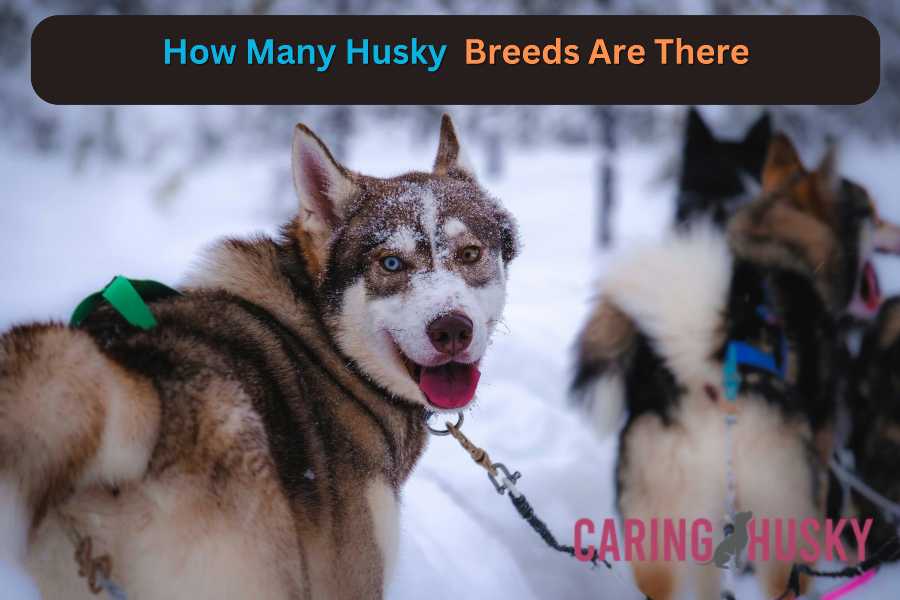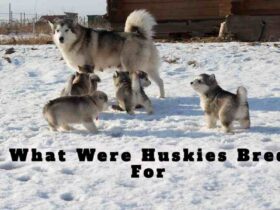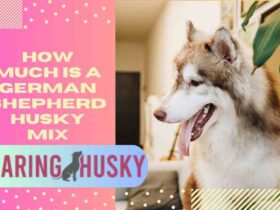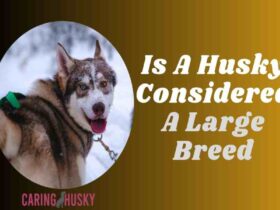Have you ever seen a husky? These dogs are amazing! They’re not just good-looking; they’re full of energy and so much fun. Huskies are known for their thick, fluffy coats, bright eyes, and friendly smiles. But did you know there are different kinds of huskies? That’s right! Each type of husky breed is special in its way. They have their unique looks and personalities.
In this article, we’re going to explore the wonderful world of husky breeds. You’ll get to know about their different types and what makes each one special. From the well-known Siberian Husky to the strong Alaskan Malamute, and even some breeds you might not have heard of, we’ll dive into the fascinating details of these amazing dogs. So, get ready to meet some of the most incredible husky breeds out there!
How Many Husky Breeds Are There?
Learn about different kinds of huskies, like the Siberian Husky and Alaskan Malamute. Find out what makes them special, where they come from, and what they’re like.
#1 Siberian Husky: The Popular One
Think of a husky? You’re likely thinking of a Siberian Husky. They’re medium-sized dogs with thick fur to keep them warm in cold places.
They have pointy ears and cool eyes, looking a bit like wolves. But they’re friendly and love to play with people.
Siberian Huskies have a lot of energy. They’re like the sporty kids in school. This energy comes from their past as sled racing dogs. They used to pull sleds far in the snow. That’s why they love to run and need to move around a lot.
#2 Alaskan Husky: The Super Runner
Next is the Alaskan Husky. They’re not just one kind of dog, but a mix made for sled racing. They look different from each other, but all are great at running long distances.
Alaskan Huskies are friendly too.
They like people and, most of all, love to run. If you see a sled race, you’ll probably see Alaskan Huskies, showing how fast and strong they are.
#3 Alaskan Malamute: The Big Friendly Dog
Alaskan Malamutes are like the big siblings of Siberian Huskies. They’re bigger and stronger. They have thick fur to help them in very cold places.
They might look a bit wolf-like, but they’re super friendly. Alaskan Malamutes are happy being part of a family.
These dogs were used to carry heavy things far in snowy areas, so they’re strong. But at home, they’re gentle and great friends, especially for families.”
#4. Samoyed: The Smiling Snowdog
Meet the Samoyed, a dog that’s always smiling! These dogs are known for their fluffy white coats that feel as soft as clouds. But what stands out is their constant smile. Samoyeds are incredibly friendly and love being around people, making them perfect family pets.
They were originally used as herding dogs in cold places, which explains their love for snowy environments and their thick, warm coats.
#5. Greenland Dog: The Arctic Worker
The Greenland Dog is a true survivor of the Arctic. These dogs are strong and built to handle the toughest cold weather. They have a rich history of helping in polar expeditions and are excellent at sled pulling.
Greenland Dogs value their independence and can sometimes prefer to do things on their own, much like a lone wolf. But don’t worry, they still enjoy good company and playtime.
#6. Tamaskan Dog: The Wolf Look-Alike
If you want a dog that looks like a wolf but is as friendly as your neighborhood Golden Retriever, the Tamaskan Dog is for you. Despite their wolf-like appearance, Tamaskan Dogs are super friendly and love to be part of the family action.
They are great with kids and adults alike, fitting in well with family life. As a newer breed, the Tamaskan has an interesting history and is steadily gaining popularity among dog lovers who admire their wolfish looks and friendly nature.
Exploring The Spectrum Of Husky Temperaments
When it comes to husky breeds, each one is special, with a temperament that sets it apart. Understanding these differences is key when choosing the right husky for your lifestyle. Some breeds, like the Siberian Husky and the Alaskan Husky, are full of energy and perfect for active people who can provide lots of exercise and outdoor adventures.
They thrive in environments where they can run and play. On the other hand, breeds like the Samoyed and the Tamaskan Dog, known for their friendly and sociable nature, are wonderful choices for families.
They love being around people and are great with children, making them ideal family pets. The Alaskan Malamute, with its gentle and loving demeanor, also fits well into family settings, especially for those looking for a larger, more robust companion.
It’s important to match a dog’s temperament with your lifestyle. Active breeds require more exercise and stimulation, while others might be more suited to a relaxed home environment. By understanding these temperaments, you can ensure a happy and harmonious relationship with your husky.
Husky Care And Keeping: Key Tips For A Healthy, Happy Pet
Huskies, known for their vibrant energy and striking looks, are not just pets but companions that bring adventure and joy to your life. However, owning a husky involves a commitment to their exercise, grooming, and training needs. Let’s explore how you can provide the best care for your husky, ensuring they stay happy, healthy, and well-adjusted.
Exercise: The Key to a Happy Husky
- Regular Exercise is a Must: Huskies are high-energy dogs that require regular exercise to maintain their health and happiness. A daily routine of running, walking, or playing in a secure area is essential. Aim for at least one to two hours of physical activity every day.
- Mental Stimulation Matters: Alongside physical exercise, huskies need mental stimulation. Interactive games, puzzle toys, and obedience training sessions help keep their minds sharp and engaged. Teaching them new tricks or commands can be both fun and mentally enriching.
- Outdoor Adventures: Huskies thrive in outdoor settings. Activities like hiking, trekking, or even dog sports like agility can be great ways to channel their energy positively. Always ensure they are securely leashed or in a safe, enclosed space.
Grooming: Maintaining the Majestic Coat
- Regular Brushing is Crucial: Huskies have a thick double coat that requires regular grooming. Brushing them two to three times a week helps prevent matting and reduces shedding. During shedding seasons, daily brushing might be necessary.
- Bathing Needs: Huskies generally require fewer baths as their coat repels dirt. However, a bath every few months or when they get particularly dirty is advisable. Use a dog-specific shampoo to protect their skin and coat.
- Pay Attention to Paws and Nails: Regularly check and clean their paws, especially after outdoor activities. Trimming their nails every few weeks is important to prevent discomfort and potential health issues.
Training: Building a Strong Bond
- Start Early: Begin training your husky from a young age. They are intelligent but can be stubborn, so consistent, positive reinforcement methods work best.
- Socialization is Key: Expose your husky to various environments, people, and other animals. Proper socialization helps prevent behavioral issues and makes them well-adjusted pets.
- Establish Leadership: Huskies respect leadership. Establish yourself as the pack leader through consistent commands and rules. However, always use positive reinforcement and avoid harsh methods.
- Continuous Learning: Keep challenging your husky with new commands and tasks. They enjoy learning and need ongoing mental stimulation to stay content.
Choosing The Right Husky For You
Finding the perfect husky breed for your lifestyle is a big decision. Before bringing a husky into your life, there are several important factors to consider:
- Lifestyle Fit: Huskies are energetic and need plenty of exercise. Ask yourself if you have the time and energy to meet their exercise needs. If you’re an active person who loves outdoor activities, a Siberian Husky or Alaskan Husky might be a great fit. If you prefer a more relaxed lifestyle, consider a breed with a calmer temperament.
- Space Requirements: Huskies are generally medium to large dogs requiring ample space. Ensure you have enough room at home and a secure yard where they can play safely.
- Family Dynamics: If you have children or other pets, choose a breed known for being family-friendly and good with other animals. Samoyeds and Tamaskan Dogs, for instance, are known for their sociability and gentleness with kids.
- Grooming and Care: Huskies have thick coats that require regular grooming. Be prepared for shedding, especially during seasonal changes, and consider whether you can commit to their grooming needs.
- Training and Socialization: Huskies are intelligent but can be independent-minded. They benefit from early training and socialization. Think about whether you have the time and patience for training.
- Health Considerations: Research common health issues in husky breeds and prepare for routine veterinary care, including vaccinations, check-ups, and potential breed-specific health concerns.
- Choosing a Breeder or Adoption: If you decide to buy from a breeder, choose a reputable one who prioritizes the health and well-being of their dogs. Alternatively, consider adopting from a rescue organization. Many huskies and husky mixes are waiting in shelters for a loving home.
By carefully considering these factors, you can choose the right husky breed for your home and lifestyle, ensuring a happy and healthy life for your new furry friend.
Final Words
Huskies are not just stunning in appearance but also rich in diversity and personality. From the energetic Siberian Husky to the friendly Samoyed, each breed offers something unique. Whether you’re an active individual seeking a lively companion or a family looking for a gentle pet, there’s a husky breed that’s perfect for you. Remember to consider your lifestyle, space, and the care needs of these magnificent dogs. By choosing the right husky breed, whether through adoption or a reputable breeder, you’re on your way to a rewarding, joy-filled companionship with one of these amazing dogs.
Common FAQs
What is the most common type of Husky?
The most common type of Husky is the Siberian Husky, known for its striking appearance and friendly nature.
What is the special type of Husky?
The special type of Husky is the Alaskan Husky, bred specifically for sled racing and notable for its endurance and speed.
What is the pure breed of Husky?
The pure breed of Husky refers to the Siberian Husky, recognized by kennel clubs and known for its distinct wolf-like features and thick coat.






Leave a Reply